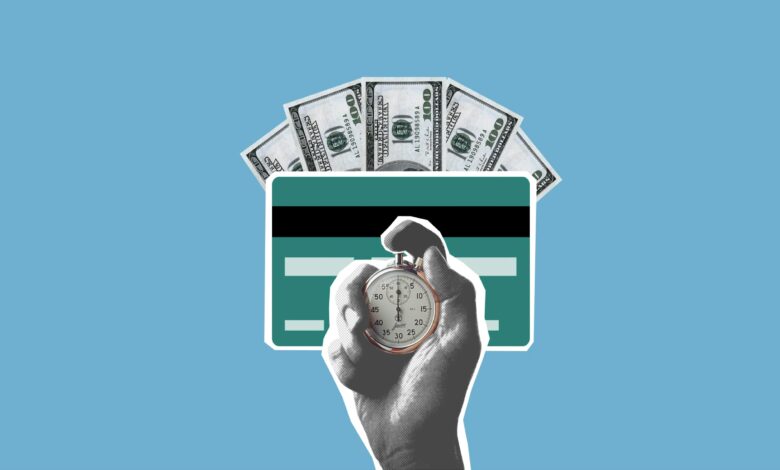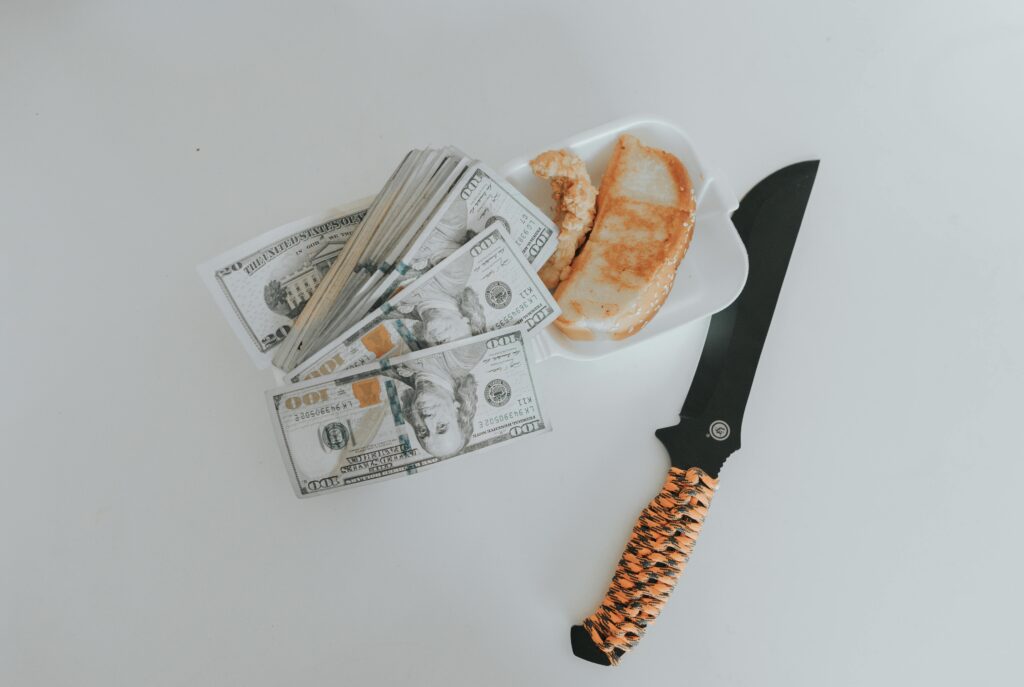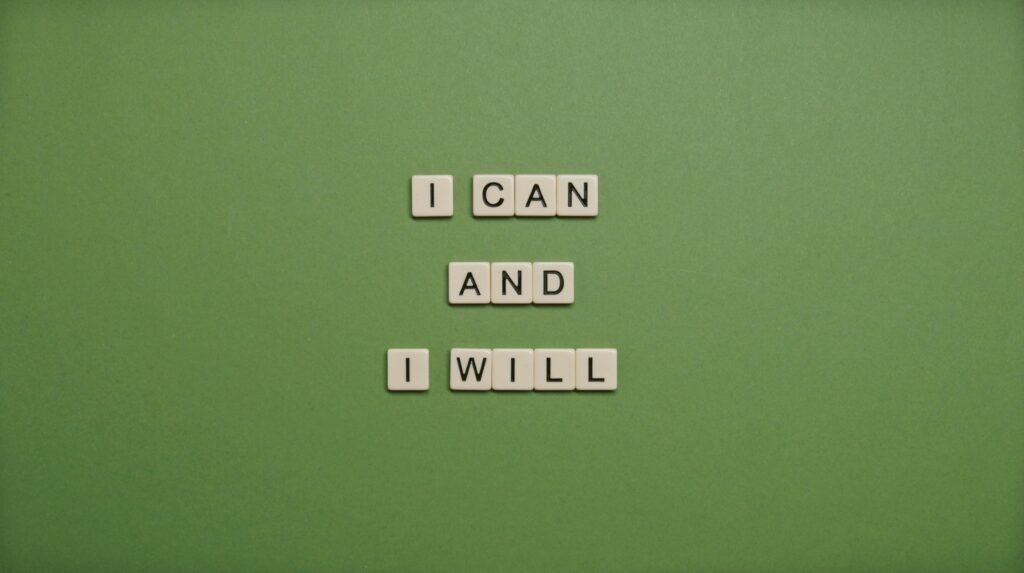How To Stop Wasting Money: 7 Quick Tips To Resist The Urge

Let me guess, you checked your bank account this morning and wondered where all your money went.
Again. I’ve been there, staring at my banking app like it personally betrayed me. :/
Here’s the thing: most of us aren’t actually bad with money. We just have zero clue where it’s disappearing to.
That $5 coffee? The random Amazon purchase at 2 AM? That subscription you forgot existed? Yeah, they’re all ganging up on your wallet.
I’ve spent years studying personal finance (got my master’s in financial management to prove it).
I can tell you this: stopping money waste isn’t about becoming some frugal hermit who eats ramen every night.
It’s about getting intentional with your cash and actually keeping more of what you earn.
This guide breaks down practical, no-BS strategies that actually work.
I’m talking real tactics I use myself, not some theoretical garbage that sounds good but fails in practice.
Ready to plug those money leaks?
How Do I Stop Wasting Money?
Look, the answer isn’t sexy or complicated: you need a spending plan. Period.
Most people cringe when they hear “budget,” but hear me out.
A budget isn’t about restricting yourself to misery. Think of it as giving your money marching orders.
Every dollar gets assigned a job, rent, groceries, fun money, whatever matters to you.
When you operate without a plan, you’re basically throwing darts blindfolded.
Sometimes you hit the target, but mostly? You’re just making holes in the wall.
A proper spending framework shows you exactly where your money flows before the month even starts.
The beauty of this approach? You eliminate guilt-spending.
When you’ve already allocated $100 for entertainment, you can actually enjoy that concert without the post-purchase anxiety.
You planned for it. You earned it. No drama.
I use the 50/30/20 framework myself: 50% for needs, 30% for wants, 20% for savings and debt payoff.
It’s flexible enough to work with most income levels while keeping you honest about priorities.
How Do People Often Waste Money?
Ever bought something just because it was on sale? Congratulations, you’ve participated in retail’s favourite magic trick.
The biggest money waster I see, both in my clients and honestly in my own past behavior, is unplanned purchasing.
We call it impulse buying, and it’s responsible for probably 40% of the financial stress people deal with.
Here’s how it plays out: You’re scrolling Instagram, see an influencer rocking some gadget, and suddenly your brain convinces you that THIS is the missing piece to your happiness.
Thirty seconds later, you’ve purchased something you didn’t know existed five minutes ago.
The retail psychology behind this is fascinating (and slightly evil).
Stores design entire strategies around triggering these spontaneous decisions. Limited-time offers.
Flash sales. “Only 2 left in stock!” messages. They’re all engineered to bypass your rational brain.
Another sneaky culprit? Convenience spending. That DoorDash order is because you don’t feel like cooking.
The overpriced airport water. The premium parking spot that saves you two minutes of walking.
These purchases feel justified in the moment. But stack them up over a month?
You’re easily dropping $300-500 on stuff that adds minimal value to your life.
How To Stop Wasting Money On Food

Food is interesting because you literally need it to survive, but it’s also insanely easy to overspend on it.
I’ve watched people drop $600 monthly on groceries for one person, then wonder why they’re broke.
Dry Goods Like Rice And Legumes Should Be Available
Your pantry should be stocked like a mini grocery store, specifically with shelf-stable staples that won’t betray you.
Rice, pasta, beans, lentils, oats, these are your financial bodyguards.
They’re cheap (we’re talking pennies per serving), nutritious, and they last forever.
Literally. I found a bag of rice in my pantry from 2022 that was still perfectly fine.
When you keep these basics on hand, you create a buffer against expensive last-minute food decisions.
Hungry but bank account looking sad? Boom, rice bowl with whatever vegetables you’ve got.
Not Instagram-worthy, but it costs $2 and fills you up.
I buy these in bulk from warehouse stores like Costco or Sam’s Club.
A 20-pound bag of rice might seem excessive, but it works out to like $0.30 per pound versus $2+ at regular grocery stores.
Stop Using Food Delivery Apps
Okay, this one’s going to hurt, but we need to talk about your DoorDash habit.
Food delivery apps are financial vampires. That $12 burrito? After delivery fees, service charges, and tip, you’re paying $22.
You just spent nearly double for the privilege of waiting 45 minutes while tracking your driver’s GPS.
I get it, delivery is convenient.
But convenience has a price tag, and most people don’t realise they’re spending an extra $200-400 monthly on these fees alone.
If you’re serious about cutting food waste, delete these apps.
Yes, seriously. Or at least move them to a folder you need to hunt for. The extra friction makes a huge difference.
Want a real-world comparison? I tracked my spending for three months. When I ordered delivery 3x weekly: $520/month on food.
When I cooked at home with occasional pickup: $280/month. That’s $240 saved, nearly $3,000 annually, just by avoiding delivery markups.
Tally Your Eating Out Expenditures
Here’s a fun experiment: pull up your bank statements and highlight every restaurant charge.
Every single one, coffee runs, lunch meetings, Friday night dinners.
Add them up.
Feeling nauseous? Yeah, most people are shocked when they actually see the number.
I once worked with a client who spent $847 in one month on restaurants.
He had no idea until we ran the numbers.
The problem with eating out is that it feels innocent. It’s just $15 here, $23 there.
But these micro-transactions are death by a thousand cuts to your budget.
I’m not saying never eat out, that’s unrealistic and honestly makes life boring.
But you need awareness. Maybe you decide $200 monthly for restaurants is your limit.
Great, track it, and when you hit that number, you’re done for the month.
Use apps like Mint or YNAB to automatically categorise your spending.
They’ll show you exactly where your money goes without manual spreadsheet torture.
Buy In Bulk
Bulk buying is basically time-travelling to lock in today’s prices.
With inflation being what it is (and let’s be real, it’s not getting better anytime soon), buying in bulk protects you from future price hikes.
That $8 olive oil today? It could be $11 next month.
But if you bought three bottles now, you’re chilling while everyone else absorbs the increase.
This strategy works best for non-perishables: canned goods, pasta, cooking oils, spices, cleaning supplies, and toilet paper.
Basically, anything that won’t rot before you use it.
One warning, though: only bulk-buy things you actually use.
Don’t convince yourself you’ll suddenly start cooking quinoa just because it’s cheap in bulk.
That’s how you end up with a pantry full of expired optimism.
Warehouse memberships like Costco ($60/year) or Sam’s Club ($50/year) pay for themselves if you shop smart.
Saved that membership fee in literally one shopping trip.
Don’t Trash Your Leftovers
Americans throw away nearly $1,500 worth of food annually. Let that sink in.
You’re basically lighting money on fire every time you toss those leftovers.
I used to be terrible at this. Cook a big meal, eat one serving, then forget about the rest until it evolves into a science experiment.
Now? Leftovers are meal prep for lazy people (said lovingly, because I am a lazy person).
Get yourself some decent glass containers and actually use them.
Sunday’s roast chicken becomes Monday’s chicken salad, Tuesday’s chicken tacos, and Wednesday’s chicken soup.
One ingredient, four meals, minimal effort.
Pro tip: designate one shelf in your fridge as the “eat this first” zone.
Everything that needs to be consumed soon goes there. You’ll waste way less when it’s literally staring you in the face.
How To Stop Wasting Money On Clothes

Fashion is where logic goes to die. I’ve watched grown adults spend $300 on jeans they’ll wear twice. (Yes, I was one of those adults. No, I’m not proud.)
Embrace The Capsule Wardrobe
A capsule wardrobe sounds fancy, but it’s just a collection of versatile basics that work together.
Think: neutral colours, classic cuts, quality pieces that don’t scream “I’m so 2019.”
When everything in your closet plays nicely together, you need way fewer clothes to create tons of outfits.
I trimmed my wardrobe down to about 40 pieces (excluding underwear and workout gear), and honestly?
Getting dressed is so much easier now. No more standing in front of a packed closet feeling like I have nothing to wear.
The financial benefit is massive. Instead of constantly buying trendy pieces that’ll look dated in six months, you invest in timeless items that last years.
That $100 white button-down shirt gets worn 50+ times. That $40 fast-fashion top? Maybe 3 times before it pills or you get bored.
Buy Quality Clothing If You Can Afford It
Quality over quantity isn’t just some minimalist mantra; it’s basic math.
A $200 pair of leather boots that lasts 5 years costs you $40 per year.
A $50 pair of boots that craps out in 8 months. You’re spending $75 annually and dealing with the hassle of constant replacements.
I’m not saying everything needs to be designer. But invest in items you wear constantly: jeans, shoes, winter coats, basic tees.
These are your wardrobe workhorses, so they deserve quality materials and construction.
Check for details like reinforced stitching, natural fabrics (they last longer than synthetics), and quality zippers.
If something feels flimsy in the store, it’ll definitely be garbage after a few washes.
Buy Direct-To-Customers
The traditional retail model is expensive. Brands manufacture clothes, sell to wholesalers, who sell to retailers, who sell to you.
Everyone takes their cut, and you pay for all those middlemen.
Direct-to-consumer brands skip that nonsense.
They manufacture and sell directly to you, which means better prices and often better quality.
Companies like Everlane, Allbirds, and Bombas operate this model.
Their prices are reasonable, quality is solid, and they’re usually transparent about manufacturing and materials.
I’ve bought probably 60% of my current wardrobe from direct-to-consumer brands, and the quality-to-price ratio is noticeably better than traditional retail.
Shop Costco
Yeah, Costco again. This warehouse is basically a cheat code for smart spending.
People sleep on Costco clothes, which is crazy because they sell quality brands for stupid-cheap prices.
We’re talking $15 for athletic wear that’s identical to stuff selling for $50 elsewhere.
Their Kirkland brand is surprisingly legit, too.
I’ve got Kirkland jeans that have outlasted designer pairs costing three times as much.
Check their website first to see current inventory before making the trip.
Borrow Clothes For Special Occasions
This tip requires checking your ego at the door, but it works.
That wedding you’re attending? You probably don’t need to buy a whole new outfit.
Ask friends or family if you can borrow something appropriate.
Most people are genuinely happy to help (and honestly a bit flattered you like their style).
For fancier events, consider rental services like Rent the Runway.
You get designer pieces for a fraction of purchase price, wear them once, send them back.
No closet clutter, no buyer’s remorse.
I used to stress about having “the perfect outfit” for every event. Now I’m way more practical.
Nobody actually remembers what you wore except you.
7 Quick Tips To Help You Stop Wasting Money
Alright, here’s where we get into the core strategies that’ll actually transform your finances.
These aren’t theoretical; I’ve used every single one myself.
1. Cancel Unused Subscriptions

Subscriptions are the zombies of personal finance; they just keep draining your money even when you’ve forgotten they exist.
Pull up your bank statements right now.
Seriously, I’ll wait. Count how many recurring charges you see.
Netflix, Spotify, gym membership, meal kit service, meditation app, cloud storage, gaming subscription, that random software trial you never cancelled…
Most people have 5-12 active subscriptions. Even at $10-20 each, you’re easily spending $100-200 monthly.
That’s $1,200-2,400 annually on stuff you might not even use.
I recently found I was paying for YouTube Premium AND Spotify. Why did I need both? I didn’t.
Cancelled one, saved $11.99 monthly. Tiny win, but it adds up.
Tools like Truebill (now Rocket Money) or Trim automatically identify and help cancel subscriptions. They’re basically financial cleanup services.
Here’s my rule: If you haven’t used something in 30 days, cancel it.
You can always resubscribe if you actually miss it (spoiler: you usually don’t).
2. Start Tracking Your Spending
You can’t fix what you don’t measure. This is finance 101, yet somehow most people skip this step.
Tracking your spending is like turning on the lights in a dark room; suddenly, you can see all the money monsters lurking in corners. That $200 monthly on coffee shops.
The $150 on random Amazon purchases. The $80 on Uber rides.
I fought this habit for years because it felt tedious. Then I actually tried it for one month, and holy hell, the revelations.
I was spending $340 monthly on “miscellaneous” crap I couldn’t even remember buying.
You don’t need fancy systems. A simple spreadsheet works. Or use budgeting apps like Mint, YNAB, or PocketGuard.
They connect to your accounts and automatically categorize transactions.
The magic happens when you review this data monthly.
You start seeing patterns. “Oh wow, I spend way too much on takeout.” Awareness creates change.
3. Creatively Get Entertained With Little Or No Money Spent

Entertainment shouldn’t require emptying your wallet, yet people drop hundreds monthly on it.
Think about low-cost or free options that actually bring joy.
Game nights with friends cost maybe $20 for snacks and drinks. Compare that to bar hopping ($100+) or concert tickets ($150+).
Hiking is free and gets you outside. Public libraries offer free movies, books, and even museum passes.
Community events like outdoor concerts or festivals cost nothing.
Potluck dinners let everyone share food costs while socializing.
My favorite discovery? Board game cafes. Pay a small cover charge (usually $5-8) and access hundreds of games.
It’s way cheaper than most entertainment and actually requires you to interact with humans instead of scrolling phones.
The key is planning entertainment intentionally instead of defaulting to expensive options out of convenience or boredom.
4. Be Self-Aware
This one’s deeper than it sounds. Self-awareness means understanding your triggers and weak points.
Do you shop when stressed? Congratulations, you’re an emotional spender.
Do you buy random stuff when bored?
Welcome to recreational shopping.
Do you splurge after a tough day? Hello, retail therapy.
I used to hit Target “just to browse” after bad workdays.
Somehow I’d always leave with $80 worth of stuff I didn’t need.
Once I recognized this pattern, I could interrupt it. Bad day now means a workout or calling a friend instead.
Understanding your money psychology is crucial. What emotions drive your spending?
When are you most vulnerable to impulse purchases?
What stories do you tell yourself to justify bad financial decisions?
This requires honest self-reflection, which is uncomfortable.
But you can’t change patterns you won’t acknowledge.
5. Stop Paying With Credit Cards
Credit cards are incredibly convenient, which is exactly why they’re dangerous.
When you swipe plastic, it doesn’t feel like real money leaving your account. It’s just numbers on a screen. This psychological distance makes it way too easy to overspend.
Cash, though? Cash hurts. Physically handing over bills creates immediate feedback that you’re spending money. You see your wallet getting thinner. It’s tangible loss.
I’m not saying destroy all your credit cards (they have benefits if used responsibly).
But if you struggle with overspending, switch to debit or cash for a few months.
The behavioral change is remarkable. Plus, you eliminate the credit card debt trap.
Those interest rates are brutal, often 18-25% APR. Miss one payment?
You’re drowning in fees and interest that can take years to escape.
FYI, if you already have credit card debt, focus on paying it off aggressively before worrying about anything else.
That interest is literally stealing from your future.
6. Shop With A Goal In Mind

Shopping without a list is like going to war without a strategy; you’re gonna lose.
Before hitting any store, write down exactly what you need.
Be specific. Not “stuff for the house” but “paper towels, dish soap, light bulbs.”
This laser focus keeps you on mission.
Grocery stores are designed to manipulate you.
They put milk in the back so you have to walk through the entire store (passing thousands of products) just to get one item.
Candy at the checkout. Sale signs everywhere. It’s psychological warfare against your wallet.
A shopping list is your defense. It gives you permission to ignore everything not on the list.
That fancy cheese? Not on the list. Those cookies on sale? Not on the list.
I use my phone’s notes app and check off items as I shop.
Keeps me focused and honestly makes shopping faster. In and out, mission accomplished.
7. Build A Budget
I’ve mentioned budgeting already, but it deserves its own section because it’s that important.
A budget is your financial roadmap. Without it, you’re just wandering around hoping you don’t crash.
Here’s how I budget: List all income sources at the top.
Then assign every dollar to specific categories: housing, utilities, food, transportation, insurance, savings, fun money, etc. Every. Single. Dollar.
This is called zero-based budgeting. When you’re done allocating, you should have $0 left to assign.
That doesn’t mean spending everything; it means intentionally choosing where money goes, including savings.
I budget at the start of each month. Takes maybe 30 minutes. I use EveryDollar (free version), but spreadsheets work fine too.
The first few months feel clunky as you figure out realistic amounts for each category.
But by month three or four, you’ve got a system that actually works.
And suddenly? You’re in control instead of constantly stressed about money.
8. Swear Off Debt (Bonus Tip)
Here’s my controversial take: debt is almost always a bad idea.
I know, I know. “But what about building credit?” “What about emergencies?” “What about leveraging debt for investments?”
Look, I’m a finance guy, I understand the theoretical arguments for “good debt.”
But in real life? Most people use debt as an excuse to buy stuff they can’t afford.
That car loan? You’re paying thousands in interest on a depreciating asset.
That furniture you financed? You’ll pay it off right when you need to replace it.
That credit card balance? You’re basically setting money on fire with those interest rates.
Living debt-free might sound impossible, but it’s liberating.
No monthly payments to stress about. No interest rates bleeding you dry. No collection calls. Just…freedom.
If you’ve got debt now, attack it aggressively.
Use the debt avalanche method (pay off the highest interest rate first) or the debt snowball (pay off the smallest balance first).
Both work; pick whichever keeps you motivated. And once you’re debt-free? Stay there.
Save up and pay cash for stuff. If you can’t afford it without financing, you can’t afford it.
Final Thoughts
Stopping money waste isn’t about deprivation; it’s about intention.
You need to know where your money goes (tracking), decide where it should go (budgeting), and cut the leaks (cancelling waste).
Pretty simple formula, even if execution takes discipline.
The tips in this guide work. I’ve used them myself and with dozens of clients.
The people who actually implement these strategies consistently see hundreds, sometimes thousands, extra dollars monthly.
Start with just one or two tips. Maybe track your spending this month.
Or cancel those unused subscriptions. Small wins build momentum.
Your future self will thank you for the financial discipline you build today.
Money stress sucks, I’d know, I’ve been there. But it doesn’t have to be your permanent reality.
Everything else flows from knowing your numbers and having a plan. You’ve got this.








